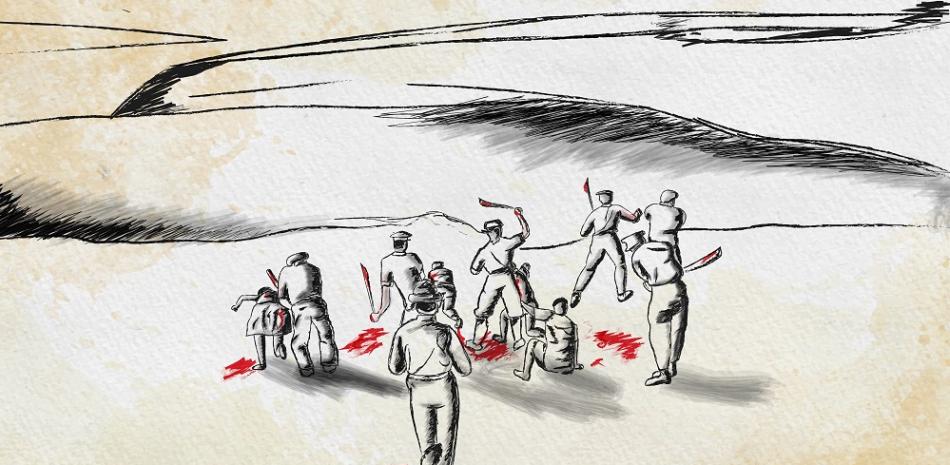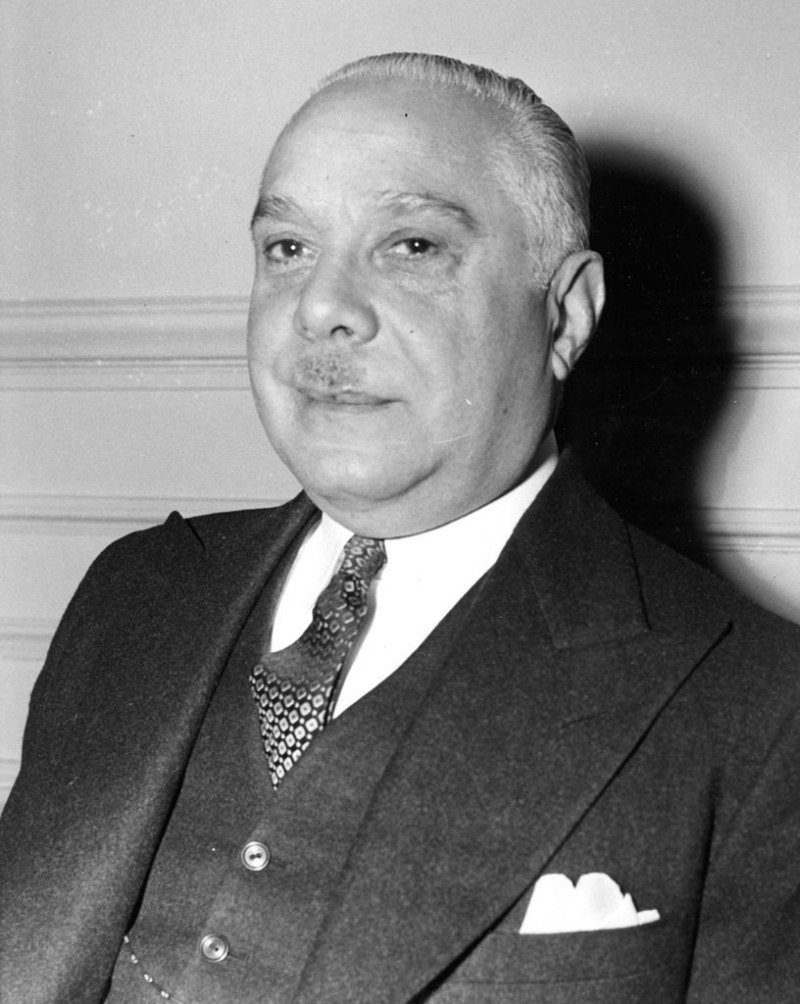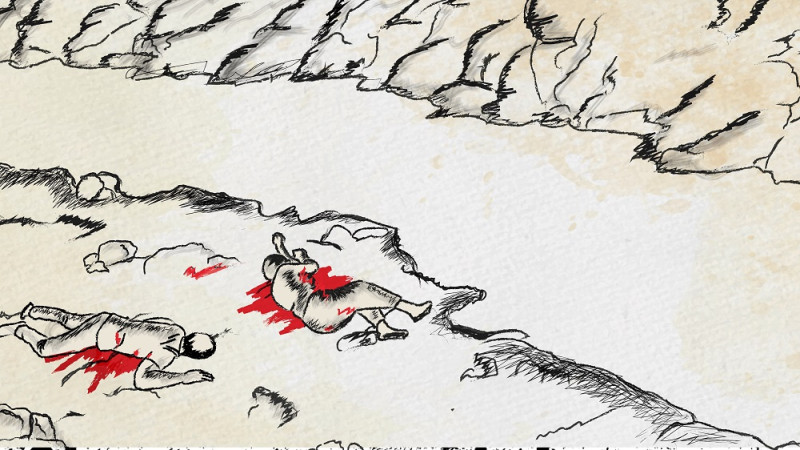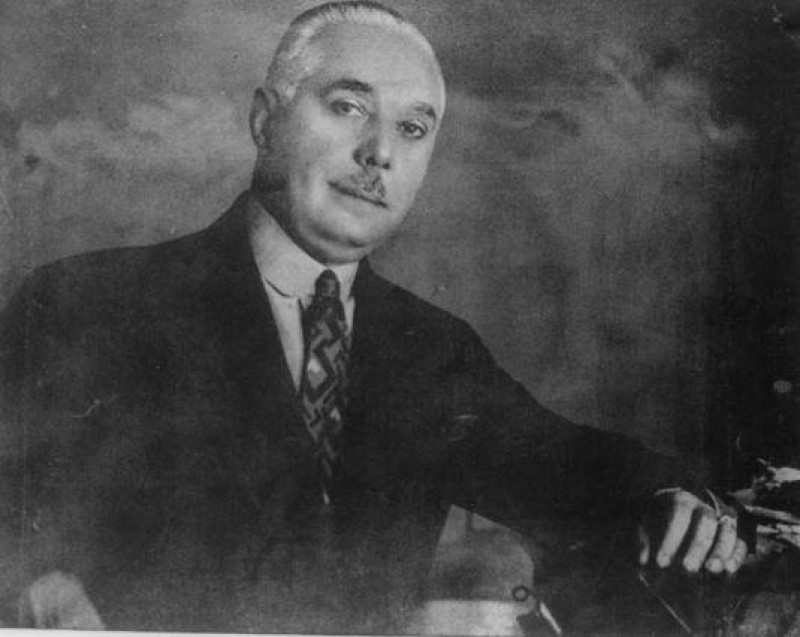The Parsley Massacre: The massacre of Haitians in 1937… How many actually died?

Santo Domingo.- In an irrefutable demonstration of his bloodthirsty behavior, dictator Rafael Leonidas Trujillo Molina ordered the massacre of thousands of Haitian citizens residing irregularly in the national territory in 1937.
“The genocide of 1937 was neither the work of a madman nor that of a satrap hardened in abjection and crime. It was simply the act of a man, or of an egomaniac if you will, who not only obeyed the brutality of his instincts, but also a barbaric conception of his destiny as a patriot and as a ruler,” described Joaquin Balaguer in “Memoirs of a Courtier of the Era of Trujillo.”
Almost a century before the massacre, Haitians had been entering the Dominican Republic, taking over agricultural lands abandoned by Dominicans during the period known as the First Republic (1844-1862).
According to historian Frank Moya Pons in his book “Manual de Historia Dominicana,” no matter how many attempts at agreements were made at that time, it was impossible to clarify the border limits between the two nations.
This agreement could only be reached in 1929 by signing a Treaty on establishing Limits during the Government of Horacio Vasquez.
“In spite of the new border limits, fixed in 1929, there were areas of the country where the population did not belong to the Republic and were alien to the dispositions and laws of the Dominican Government”, explained Moya Pons.

Photograph of dictator Rafael Leonidas Trujillo Molina. ARCHIVE GENERAL OF THE NATION
THE FATAL ORDER
The historian relates that in the first days of October 1937, Trujillo traveled to Dajabón. He gave a speech stating that the occupation of Haitians in the borderlands “should not continue” and ordered the extermination of all Haitians in the country.
Dr. Joaquin Balaguer describes this moment in his work.
He explained that the dictator was in the aforementioned province leading an act when he was interrupted by a high-ranking Army officer, who approached him to inform him that “a band of Haitian marauders had penetrated the national territory, stealing a large number of cattle and plundering, as usual, several farms in the border region.”
According to Balaguer, the denunciation irritated Trujillo, so he ordered the military to: “Give instructions to proceed from this very night to exterminate without contemplation all persons of Haitian nationality who are illegally in Dominican territory.”
Hours after issuing the order, a terrible hunt began, which did not even discriminate between the elderly and women.
How many victims did the 1937 massacre ordered by Trujillo claim? According to historian Frank Moya Pons, the tyrant had some 18,000 Haitians hunted down and killed in all parts of the country, with only those who managed to cross the border or those who were protected in the sugar mills who “did not want to lose their labor force” being spared. However, Balaguer stated in his memoirs that 17,000 Haitians died in the genocide, among them elderly people and women who “fled with their children in their arms, trying futilely to reach safety in their native country.”
Even dark-skinned Dominicans were counted among the victims. At that time, the country was militarily divided between the North and South departments. The slaughter was geographically limited to the Northern Department, which included Bonao, La Vega, Puerto Plata, Samaná, the border area up to Restauración, and the entire northwest line.
“This work of extermination was coldly carried out, prolonged for several days before the astonished and impotent eyes of the dismayed nation,” said the late political leader.
The bodies of the victims were thrown into rivers, especially the river that separates the two countries and which, due to the genocide and other historical disputes, is known as the Massacre River, into the sea and, to a lesser extent, into mass graves.
The version that the number of dead in the genocide amounted to 17,000 was corroborated by Luisa de Peña, director of the Memorial Museum of the Dominican Resistance, who, although she emphasized during an interview granted to the EFE news agency in October 2022, that it is “impossible to determine an exact number of victims,” the investigations coincide mostly in this figure.

Illustration of the Perejil Massacre.KHARLA CEBALLOS / LD
The number of dead mentioned over the years is disparate depending on the sources but usually ranges from 5,000 to 35,000 Haitians massacred.
In his book “Trujillo and Haiti,” historian Bernardo Vega refers to the fact that, over time, there has been an imprecision in the number of victims of “la matanza de perejil.”
However, he bases his analysis of the number on the population census carried out before and after the event and the reports of U.S. officials who were at the customs posts on the Dominican-Haitian border at the time.
The last population census before the massacre carried out in 1936 indicated, according to Vega, that the number of Haitians living in the country amounted to 8,492. “This allows us to conclude that the dead fluctuated between 4,000 and 6,000,” he said in his work.
For his part, writer Juan Daniel Balcácer, president of the Dominican Academy of History, told reporters from Listín Diario that “it has never been possible to establish the exact number of dead, as there are no reliable statistics available from either side.”
“What there have been, and do exist, are assessments of both Dominican and Haitian authorities, as well as opinions of various journalists and historians,” he added.
He explained that, based on Haitian sources, in 1946, journalist Albert Hicks estimated that in Monte Cristi and Santiago, some 5,000 died; in Dajabón, 3,000, and stated that the total number of dead ranged between 12,000 and 25,000 people.
“The generality of Dominican historians is of the opinion that the victims were between 5,000 and 18,000,” he said. Balcácer’s statement was made taking into account that the Dominican population at the time must not have exceeded 1.5 million inhabitants.
WHAT THE REGIME SAID
The dictatorship hid the massacre by downplaying its relevance and defining the atrocious event before the Dominican Republic and the world as “an isolated incident between peasants and Haitians.”
Despite this cover-up, the international media began to spread the news that Trujillo had ordered the ruthless annihilation of thousands of Haitians. Hence, the Dominican legation in Washington, DC, issued a press release seeking to “protect the image” of the regime, which did not save them from sanctions and repudiation abroad.
On October 29, 1937, Listin Diario published a letter by Trujillo on October 21 of that year addressed to the Dominican ambassador in Port-au-Prince, Enrique Jimenez. In the message, the dictator downplayed the importance of the “incident” and assured that his Government would condemn those responsible for the massacre.
“I have faith that this situation will be so clear that it will be possible to establish the responsibility of the guilty,” the letter signed by the tyrant said.
He also said that he viewed with “true sorrow the determination that certain enemy elements of both governments are putting into play, with the purpose of creating division and hatred between the two peoples,” referring to those who denounced the atrocious genocide.
In the letter, Trujillo asked his official to let Haitian President Sténeo Vincent know that “the incident that occurred on the northern border is not and cannot be a reason for a breakdown” in relations between the two countries.
“For my part, no event or circumstance, no matter how apparently adverse it may seem, will change my loyal friendship with him (Vincent), his government and the Haitian people,” Trujillo said.
 Dictator Rafael Leónidas Trujillo Molina. ARCHIVO GENERAL DE LA NACIÓN
Dictator Rafael Leónidas Trujillo Molina. ARCHIVO GENERAL DE LA NACIÓN
“PEREJIL”
The misarticulation of the word “perejil” became the death sentence for thousands of Haitians.
This is one of the most atrocious features of the massacre since the regime’s executioners used this difficulty in pronouncing the word to differentiate them from the darker-skinned Dominicans.
This event that marked the relations between the Dominican Republic and Haiti forever has been told through the cinema by the Dominican director José María Cabral in his film “Perejil,” released at the end of 2022.
WHY DID TRUJILLO ORDER THE GENOCIDE?
Many still wonder why he gave the order that took the lives of these foreigners in a matter of days. However, historians such as Juan Isidro Jimenes Grullón attribute the genocide to two facets of Trujillo’s psychological profile: his cruelty and his delusion of grandeur.
“The first explains the abominable, inconceivable character of the order… The second clarifies the purpose by answering the question that no one should have asked: why that massacre? Well, to provide Haiti with a motive for hostilizing the Dominican people, to which Trujillo’s disciplined Army was ready to respond overwhelmingly”, he said in the book “The Dominican Republic: Analysis of its past and present.”
Bernardo Vega states in “Trujillo and Haiti” that it is difficult to know the tyrant’s motives, but it is obvious that it was not “a decision of the moment.”
He indicates that before the massacre, Trujillo had tried to get the sugar mills to use less Haitian labor and consulted International Law experts on illegal migration; he was also aware that military officers under his command were engaged in the illicit trafficking of Haitians from the border.
But he believes that what most influenced the dictator was his desire to “whiten” the Dominican people by reducing the presence of Haitians and bringing in white immigrants from Europe.
REPERCUSSIONS
The slaughter of the Haitians was a scandal for all of Latin America and for the United States, which unanimously repudiated the act.
But Haiti did not respond militarily to “avenge” or defend its compatriots.
The Dominican State had to compensate the Haitian Government, presided over at that time by Stenio Vincent, in the amount of 750,000 dollars for “the damages caused by what was officially called border conflicts.”
In other words, Trujillo paid approximately $40 for each Haitian killed in the genocide. Although everyone knew it was genocide, the defenders of the Trujillo regime almost immediately launched a propaganda campaign in favor of the satrap, making him out to be “a defender of nationality.”


















The Haitian killed by Trujillo were a lot less than described in history books, that is why there are no mass grave or proof o such large massacre. It was only in the border town of Dajabon. Trujillo really killed far more Dominican political depositor than Haitian. Why the subject of something that happen over a hundred years ago, when we are being invaded by illegal Haitians?
The truth is not always easy to accept but it remains the truth. Even on person is too many, imagine how many Dominicans would die if they were ask to articulate “shopping bag”
Can anyone just imagine the number of bodies that such killing would it had left behind. 17K people in a matter of days is not something that can be hide. There weren’t so many Haitians living in the Dominican Republic in order for the Trujillo government to do that.
The biggest haitian lie ever told, not even 300 were killed, not 1 massive graveyard of haitian bodies found, haitians fooled the DR goverment into making it believe they were brutally killed they fooled our own goverment and made DR to give them 5,000 km2 of land to settle the dispute. Internationally.They got 1/3 of their land basically lying that they got killed when in fact haitians were chased down until they left to haiti again. I repeat there is not 1 mass graveyard of haitians killed, in haiti they say the number is 30k, but you cant hide or move 30k bodies without nobody seeing, the olimpic stadium in DR can only host 12k people, imagine dig up holes for 30k or 15k dead bodies
@napoleaon bonasera Well, It’s Dominican Historians who are describing the event, and it is documented in all Dominican libraries and history books, including In his book “Trujillo and Haiti,” historian Bernardo Vega, so why would you call this The Biggest Haitian lie ever told? For his part, writer Juan Daniel Balcácer, president of the Dominican Academy of History, explained that “The generality of Dominican historians believes that the victims were between 5,000 and 18,000,” he said. Balcácer’s statement was made taking into account that the Dominican population at the time must not have exceeded 1.5 million inhabitants. Is that number not enough for you to consider this an evil act to be denounced?
This is not even mentioned in Haitian school’s history books. Haiti needs to build a monument to the victims at the border.
It is sad that some of you readers lack objectivity about the crimes committed by Trujillo against the Haitian people. Unfortunately, there were apologists who tried to minimize or hide what happened including well known historians and Balaguer. The result is a Dominican population that lacks knowledge about the massacre. Yes, Trujillo also killed of Dominicans. But, there is no need to justify genocide and then say it was to protect the homeland. It was about whitening the country. Did he succeed ? Are light skinned Dominicans considered white outside of DR? With few exception, I dont think so.
While Dominican being peacefully invaded by Haiti with over 5 millions inside Dominican territory along with 40% of all births in DR are of Haitian women cope with 40% of health budget goes to treat Haitian national according to Liston Diario. When people see this in their own country they are seeing a hero in Trujillo who was able to maintain and control the border until the liberal government in 1996 after Balaguer took over eliminating all border policies and in cas of Leonel (PLD) opened the border just as Biden did after Trump. Liberal government of almost 30 years had been a total disaster and probably resulting in the fusion of the island.
The truth is that we don’t know how many were actually killed in this dark part of Caribbean history. Not for a lack of trying, but the mass graves have not yet been found. It’s odd because the alleged number of bodies would be really hard to hide and this is why the number of those killed has always come into question. Trujillo always exaggerated anything he did, was a proud man and his hatred of Haiti (due to historical conflicts and Haitian oppression of the Dominicans) was deep. It is said he was Haitian or had Haitian family members himself. Trujillo was one of the worst dictators in modern history and he brutalized the Dominican people and committed many atrocities, even with his very own people, so many books have been written on this topic by historians and others. First of all, let’s not conflate the actions of a cruel dictator who was so awful, his people had to kill him to remove him from office. The relationship between Haiti and DR has been a contentious one to say the least. Haiti was once a powerful country. To the Dominican people, a brutal and cruel invader and egregious ruler over the Dominican people who had to take up arms to free themselves of their oppressor. Since that time, the Dominican People have been afraid of a repeat of that dark time in their history. This in no way justifies actions of the parsley massacre or any of the other atrocities committed since then. But I hope it gives som context so that people understand why Dominicans feel this way toward Haitians even if some feel this isn’t justified. Many Haitians feel that the Dominican Republic is all Haitian property while Dominicans, very different in ethnic makeup and cultural background defend their territory from daily attacks.
It took the Third Reich almost a decade to set up the manpower and logistic it took to commit the killings of the Holocaust, but we are supposed to believe that Trujillo and his regime had better technical and administrative abilities? Most of the killings were in Dajabon, most of the people were new to the country coming from Cuban sugar plantations after the crash in price. It also happened after the Haitian president refused to turn over dissidents to the Trujillo regime. It was most likely a punitive raid along the border after Haitians refused to respect the treaty of 1929, just like they are doing again today.